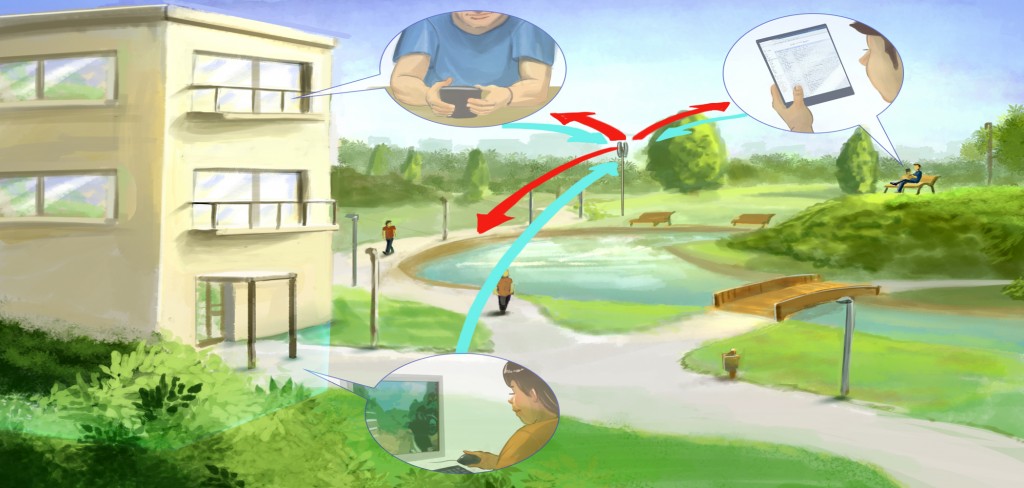Abstract

Wireless Local Area Networks (WLANs) based on the IEEE~802.11 standard apply a simple contention-based radio access protocol. Downlink communication from access points to mobile stations shares the radio channel with uplink communication from mobile stations to the access points. This protocol is due to the contention-based design that targets the operation in unlicensed spectrum. In the future, because of the growing demand for wireless communication services, WLANs might not only operate in unlicensed but also in licensed spectrum. However, licensed spectrum favors the use of separate (paired) radio channels for downlink and uplink communication — a setup that requires frequency-division-duplex communication. This paper describes and evaluates the feasibility of a WLAN system operating in paired spectrum with a proof of concept implementation. Our testbed employs off-the-shelf WLAN chips (two per device) and driver modifications that enable the system to operate with downlink-uplink separation while still maintaining the ability to function in unlicensed (single-channel) spectrum. We provide insights based on our testbed and evaluate the performance of our solution.
Copyright Notice
The documents contained in these directories are included by the contributing authors as a means to ensure timely dissemination of scholarly and technical work on a non-commercial basis. Copyright and all rights therein are maintained by the authors or by other copyright holders, notwithstanding that they have offered their works here electronically. It is understood that all persons copying this information will adhere to the terms and constraints invoked by each author’s copyright. These works may not be reposted without the explicit permission of the copyright holder.